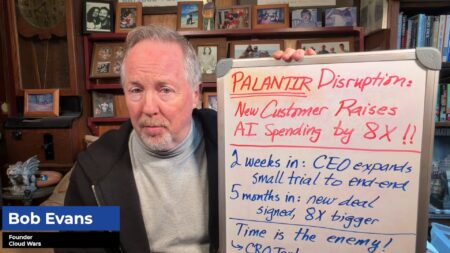The responsibilities of Chief Financial Officers are constantly evolving. This evolution has been heavily encouraged by advancements in major technological tools, like robotic process automation (RPA), artificial intelligence (AI), and machine learning (ML). But it also encapsulates the need for CFOs to be included in the strategic innovation for the organization. CFOs can offer organizational value through their direction in budgeting, forecasting, and competitive positioning.
An example that significantly reimagined the CFO role is Automated Period Reporting, which is useful for forecasting and strategic planning. Similar tools can prevent cybersecurity risks as well as enhance customer experiences. Ultimately, these technologies aid in more accurate and timely decision-making.
To plan for a business’s technological future, it is valuable to review technology’s historical impact. As part of the Future Office of the CFO program, Sage Inntact shares a useful whitepaper, CFO 3.0 Digital Transformation Beyond Financial Management. Here are a few highlights from the resource:
The Early Stages: CFO 1.0 & CFO 2.0
CFO 1.0 solely focused financial reporting processes on what previously happened. They didn’t have the capability of forecasting future data. During CFO 1.0, financial workers saw the rise of digitalization. Evidently, digital technologies and digitized data strongly impacted how work was completed, how customers engaged with companies, and how digital revenue streams were created.
CFO 2.0 introduced automated accountancy functions. For instance, this stage included business intelligence and cloud-based tools for financial management. The goal of CFO 2.0 was to not just report previous data but to analyze data in real-time and stay up to date with business operations.
CFO 3.0 & the Fourth Industrial Revolution
CFO 3.0 has been referred to as the fourth Industrial Revolution. The first was the era of steam and water. The second introduced electricity and assembly lines. The third brought in computerization. Now, the fourth enhance computers and automation, focusing on automation based on machine learning.
Continuous data reporting allows finance workers to apply real-time data for further development. With real-time visibility, continuous trust tests, and validates the data coming in. Continuous accounting aims to increase data accuracy by automating tedious tasks. Continuous insight leaves more time for strategic tasks rather than performing compliance, audits, and other now automated tasks.
These technological advances accelerate businesses adapting their strategies. From the fourth Industrial Revolution, high-speed internet, AI, big data analytics, and cloud technology have been blooming. Continuous data reporting gives businesses a competitive edge. With these tools, CFOs and their finance teams can make instant decisions and develop data-led strategies for the entire company.
Final Thoughts
Businesses can benefit from technologies, including AI, ML, and RPA. With an increase in automatic processes, CFOs, finance professionals, and other employees can spend more time on analysis, prediction, and decision-reporting. In turn, they will spend less time on manual accounting and data processing.
Complements of our underwriter:








